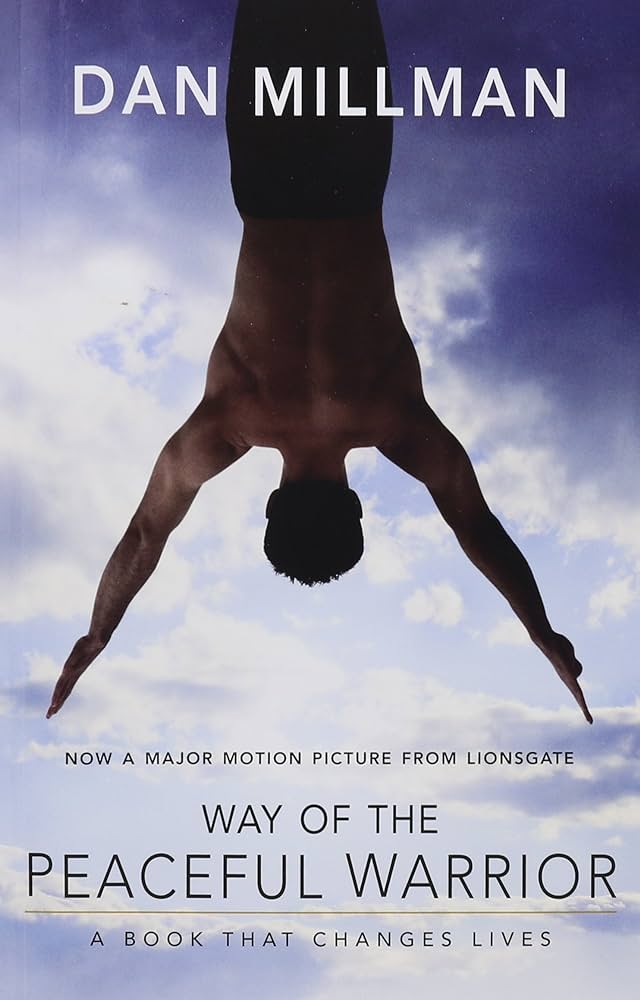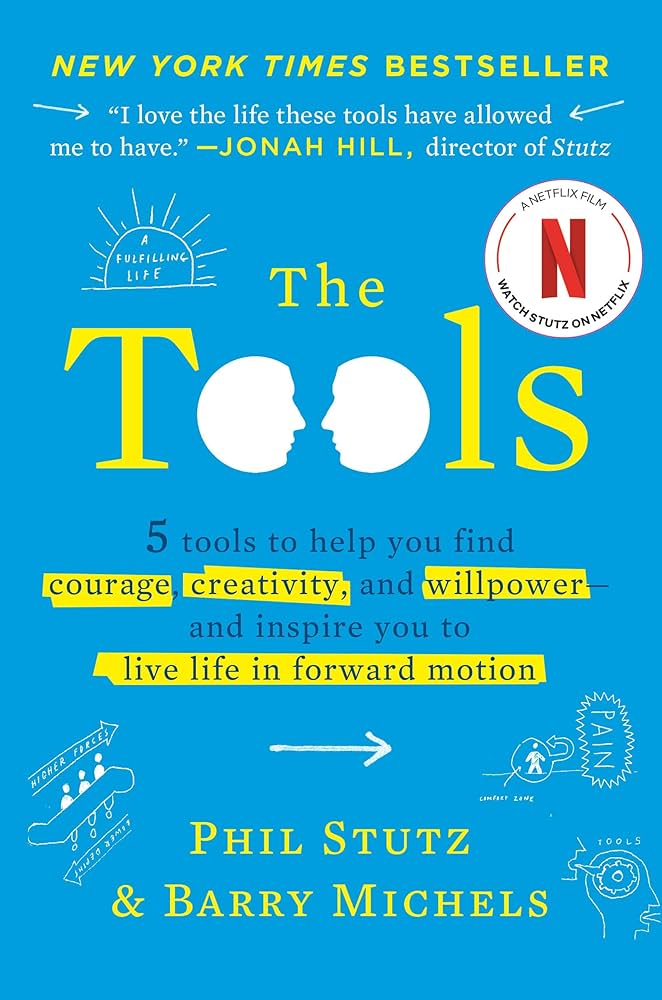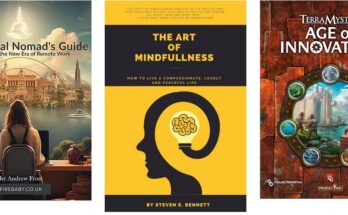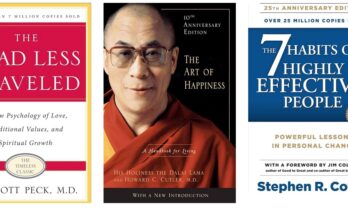


The Wisdom of Insecurity" by Alan Watts vs The Way of the Peaceful Warrior" by Dan Millman vs The Tools" by Phil Stutz and Barry Michels
Comparison in Brief
“The Wisdom of Insecurity” by Alan Watts
- Author: Alan Watts
- Publication Year: 1951
- Genre: Philosophy, Self-help
- Core Theme: Embracing the present moment and finding peace in the uncertainty of life.
- Main Concepts:
- The illusion of security and the importance of living in the now.
- The conflict between the ego and the real self.
- Letting go of the need for control to achieve true peace.
- Style: Philosophical, reflective, and thought-provoking.
- Impact: Influences the reader to reevaluate their relationship with time, control, and acceptance.
“The Way of the Peaceful Warrior” by Dan Millman
- Author: Dan Millman
- Publication Year: 1980
- Genre: Autobiographical novel, Spirituality
- Core Theme: The journey of self-discovery and personal transformation.
- Main Concepts:
- The importance of discipline, courage, and spiritual awareness.
- The mentor-student relationship and its role in personal growth.
- Overcoming inner struggles and embracing life’s challenges.
- Style: Inspirational, narrative-driven, and engaging.
- Impact: Motivates readers to pursue inner growth and face life’s obstacles with a warrior’s mindset.
“The Tools” by Phil Stutz and Barry Michels
- Authors: Phil Stutz and Barry Michels
- Publication Year: 2012
- Genre: Self-help, Psychology
- Core Theme: Practical techniques for overcoming life’s challenges and unlocking potential.
- Main Concepts:
- Specific tools designed to address common psychological barriers.
- Techniques for enhancing creativity, discipline, and personal power.
- Focus on proactive steps rather than passive reflection.
- Style: Practical, actionable, and direct.
- Impact: Provides readers with concrete strategies to improve their lives and achieve their goals.
Table Comparison
| Aspect | “The Wisdom of Insecurity” | “The Way of the Peaceful Warrior” | “The Tools” |
|---|---|---|---|
| Author | Alan Watts | Dan Millman | Phil Stutz, Barry Michels |
| Publication Year | 1951 | 1980 | 2012 |
| Genre | Philosophy, Self-help | Autobiographical novel, Spirituality | Self-help, Psychology |
| Core Theme | Embracing the present moment | Journey of self-discovery | Practical techniques for overcoming challenges |
| Main Concepts | – Illusion of security | – Discipline and courage | – Specific psychological tools |
| – Conflict between ego and self | – Mentor-student relationship | – Enhancing creativity and discipline | |
| – Letting go of control | – Overcoming inner struggles | – Proactive steps for improvement | |
| Style | Philosophical, Reflective | Inspirational, Narrative-driven | Practical, Actionable |
| Impact | Reevaluates relationship with time and control | Motivates for inner growth | Provides concrete strategies |
In-Depth Comparison
“The Wisdom of Insecurity” by Alan Watts
Alan Watts, a renowned British philosopher, and writer, challenges the conventional notions of security and control in his seminal work, “The Wisdom of Insecurity.” The book’s central thesis is that the pursuit of security is an illusion that distances us from the true essence of life, which lies in the present moment. Watts argues that our constant striving for a secure future or a stable identity prevents us from experiencing the fullness of the now.
Key Concepts:
- Illusion of Security: Watts elucidates that security is a construct of the mind, an attempt to control the uncontrollable aspects of life. He emphasizes that true security lies in embracing uncertainty and accepting the transient nature of existence.
- Conflict Between Ego and Self: The book delves into the duality between the ego (the constructed self) and the real self (the unfiltered, present self). Watts argues that the ego’s need for control and certainty leads to anxiety and dissatisfaction.
- Letting Go of Control: A significant portion of the book is dedicated to the concept of letting go. Watts suggests that by relinquishing our need to control outcomes, we open ourselves up to a more profound sense of peace and contentment.
Style and Impact: Watts’ writing is deeply philosophical and reflective, encouraging readers to ponder their existence and relationship with time and control. The impact of the book is profound, often leading readers to a transformative realization about the nature of their anxieties and the beauty of living in the present.
“The Way of the Peaceful Warrior” by Dan Millman
Dan Millman’s “The Way of the Peaceful Warrior” is a semi-autobiographical novel that blends spiritual teachings with an engaging narrative. The book chronicles Millman’s own journey of self-discovery under the guidance of a mysterious mentor named Socrates.
Key Concepts:
- Discipline and Courage: Central to the book is the theme of discipline and courage. Millman learns that true strength comes from within and that facing one’s fears is essential for personal growth.
- Mentor-Student Relationship: The dynamic between Millman and Socrates highlights the importance of mentorship in personal development. Socrates’ teachings push Millman to look beyond the surface and explore deeper aspects of his being.
- Overcoming Inner Struggles: The narrative emphasizes the internal battles that one must face to achieve peace and fulfillment. Millman’s journey is fraught with challenges that mirror the reader’s own struggles, making the story relatable and inspiring.
Style and Impact: The book’s narrative-driven style makes it accessible and engaging. It reads like a novel, but its underlying spiritual lessons are potent and thought-provoking. “The Way of the Peaceful Warrior” has inspired many to embark on their own journeys of self-discovery and to adopt a warrior’s mindset in facing life’s challenges.
“The Tools” by Phil Stutz and Barry Michels
Phil Stutz and Barry Michels’ “The Tools” offers a practical approach to personal development, rooted in psychology. Unlike the more philosophical or narrative-driven styles of Watts and Millman, “The Tools” is straightforward and action-oriented.
Key Concepts:
- Specific Psychological Tools: The book introduces five tools designed to address common psychological barriers. These tools are:
- The Reversal of Desire
- Active Love
- Inner Authority
- The Grateful Flow
- Jeopardy
- Enhancing Creativity and Discipline: Each tool is geared towards enhancing specific aspects of one’s life, such as creativity, discipline, and personal power. The authors provide detailed explanations and practical exercises to implement these tools.
- Proactive Steps for Improvement: The focus is on taking proactive steps rather than passively reflecting on one’s issues. The tools are meant to be used actively and consistently to see real change.
Style and Impact: “The Tools” is written in a practical and direct style, making it easy for readers to understand and apply the concepts. The book’s impact lies in its actionable nature, providing readers with tangible strategies to overcome obstacles and achieve their goals. It empowers individuals to take control of their lives and make meaningful changes.
Conclusion
Each of these books offers a unique perspective on personal growth and self-discovery:
- “The Wisdom of Insecurity” encourages readers to embrace the present moment and find peace in uncertainty.
- “The Way of the Peaceful Warrior” inspires through a narrative of personal transformation and spiritual awakening.
- “The Tools” provides practical, actionable strategies for overcoming psychological barriers and achieving personal goals.
By understanding the different approaches and insights each book offers, readers can choose the one that best resonates with their current life situation and personal growth journey.



